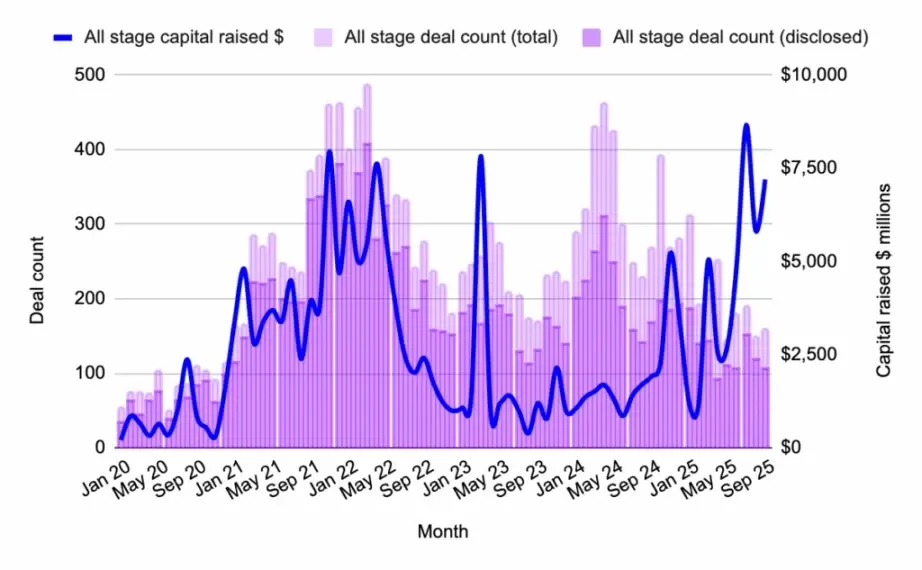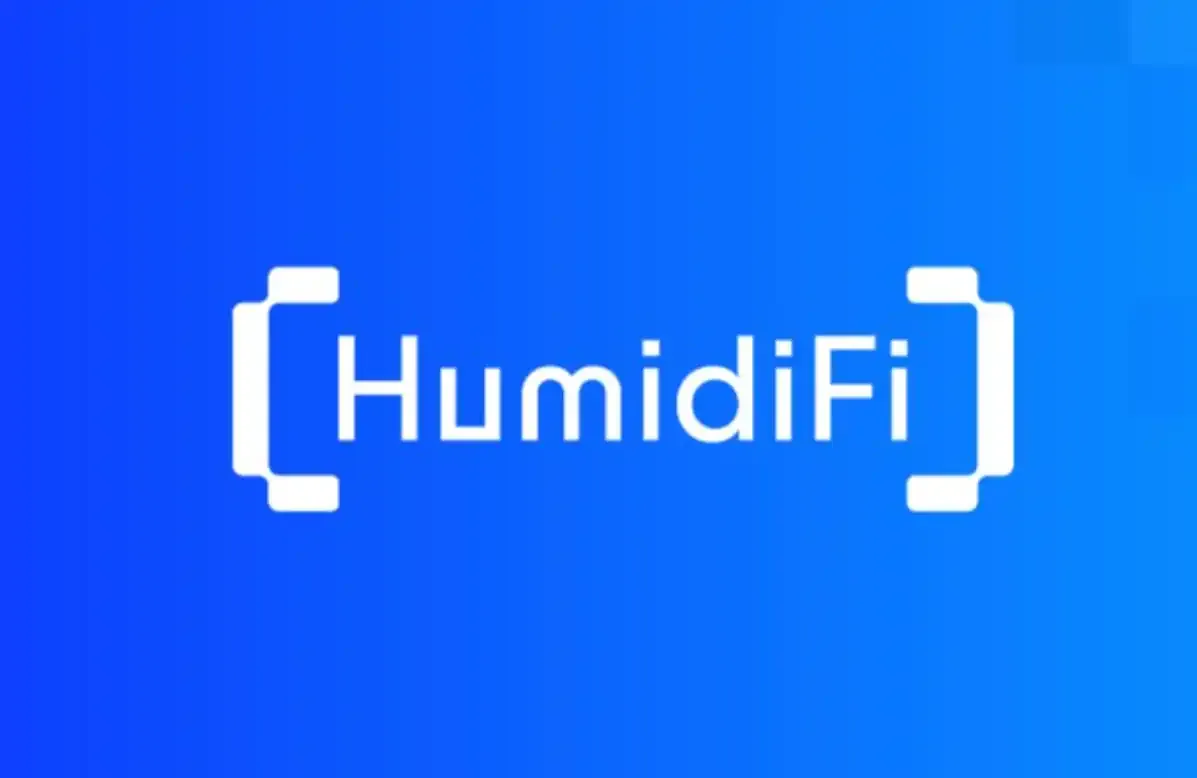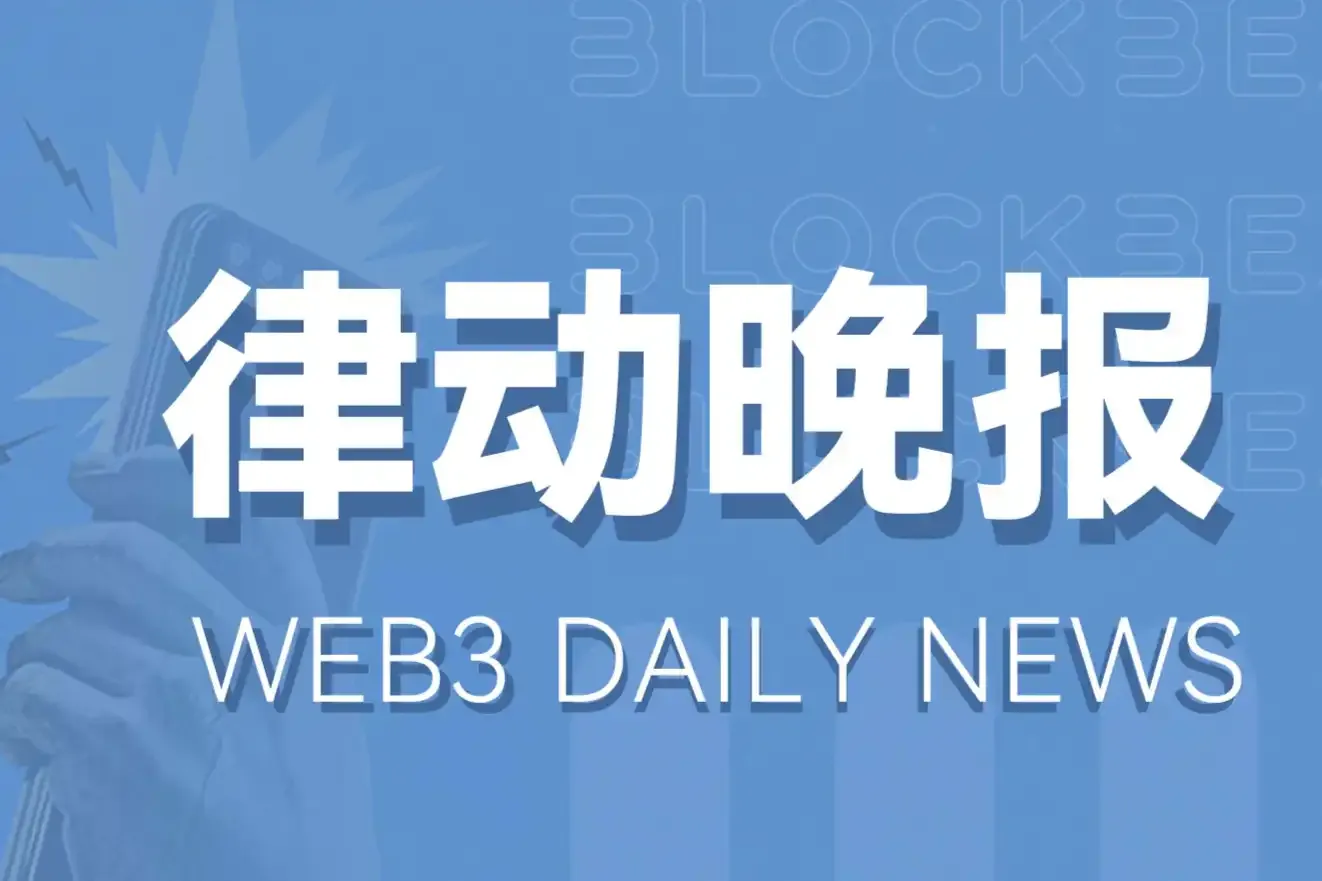Original Author: kenton.eth
Original Translation: Ismay, BlockBeats
Editor's Note: Loyalty programs have become an important tool for projects to gain user loyalty and drive product growth. In this article, Kenton, the founder of Sense Finance and former integration engineer at MakerDAO, details the design, implementation, and the advantages and disadvantages of loyalty programs in practical applications. From the successful experiences of projects such as Ethena, Napier, and Blur, we can see that a reasonable loyalty strategy can not only effectively improve the KPI of a project, but also gain an advantage in market competition. However, loyalty programs also face issues such as lack of transparency and user fatigue, and urgently need further innovation and optimization.
The new era of digital loyalty in Web3 is on the horizon, driven by innovative point systems. Since the groundbreaking launch of the Blur loyalty program in 2022, teams have been adopting this new incentive paradigm and leveraging its advantages. With the introduction of each new loyalty program, projects continue to advance in the field of incentive design, discovering new reward mechanisms and incentive behaviors. By 2024, a diverse ecosystem of loyalty programs has flourished, adding unique colors to the evolving loyalty metaverse for each project. This rapid evolution has created a rich variety of reward mechanisms and targeted behaviors, providing unprecedented opportunities for user activation and retention. However, for novice builders, exploring the complexity of "loyalty economics" may be daunting. This situation is about to change.
Through conversations with loyalty program issuers and analysis of over 20 loyalty programs, this guide reveals the benefits, criticisms, and practical applications of loyalty economics, applicable to both new and established loyalty issuers.
The first part provides an introduction to loyalty programs, while the second part comprehensively outlines loyalty economics in Web3.
Are you ready to upgrade your incentive program? Let's delve deeper.
Part One: Introduction to Loyalty Programs
What are Loyalty Points?
Fundamentally, loyalty points are a form of digital reward unit, whose value lies in its utility or its convertibility into tangible benefits—whether it's exclusive access, product discounts, or direct monetary value. Projects strategically deploy loyalty programs not only to cultivate loyalty, but also to drive product adoption, amplify network effects, and shape user behavior by accelerating product growth.
Why are Loyalty Points Important?
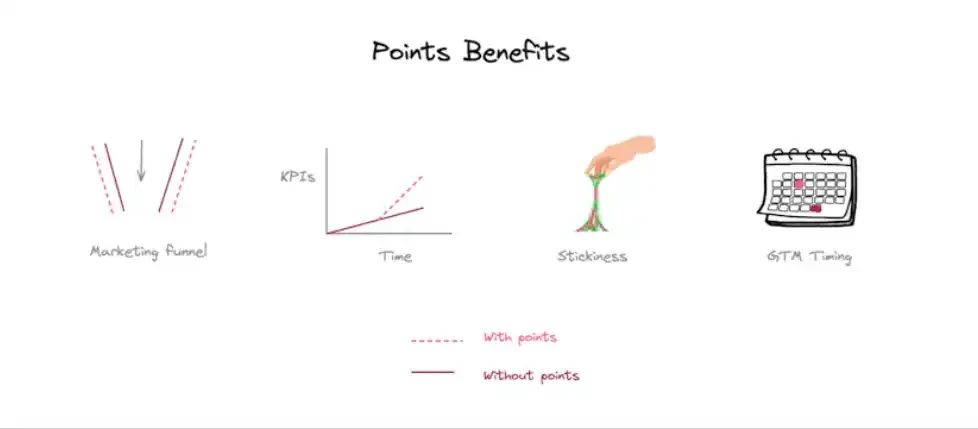
Loyalty programs establish a mutually beneficial relationship between brands and users. Companies gain loyalty, growth, and data, while users are rewarded for repeat usage. Well-designed loyalty programs help drive long-term engagement and deepen emotional connections, both of which are crucial for the defensibility of a product.
In general, both Web2 and Web3 companies/projects can benefit from loyalty programs in the following ways:
Marketing - When combined with referral programs, loyalty points can expand marketing channels.
Growth - Because loyalty points provide value, they reduce the effective price of products/services, enabling loyalty programs to increase conversion rates within marketing channels and drive growth in key performance indicators (such as active user numbers).
Stickiness/Loyalty - Loyalty programs can increase product stickiness, thereby increasing the lifetime value (LTV) of users and reducing churn. Research shows that loyal members spend an average of 27% more, so when the average LTV exceeds the cost of loyal members, product stickiness is achieved.
Market Entry Timing - Dynamic loyalty programs can help products with network effects (such as social media platforms and financial markets) get off the ground. By rewarding early adopters, companies can improve the user experience (UX) of the product until it reaches critical mass.
Users can also find value from loyalty programs in the following ways:
Incentive Value - This value can be manifested in the form of discounts, free products, exclusive access and benefits, and in the form of currency.
Brand Identity - An effective loyalty program is not just transactional rewards; it also makes customers feel valued and emotionally connected to the brand. The pinnacle of loyalty is when customers feel a sense of psychological ownership of the brand.
Part Two: Loyalty Economics of Protocols
Traditional Loyalty Programs
While loyalty programs have existed for decades in Web2, their adoption in Web3 introduces new dynamics and opportunities. In Web2, we are familiar with loyalty programs from airlines, such as Delta Air Lines' SkyMiles, and credit card reward programs, such as Chase Ultimate Rewards. These programs have successfully driven customer retention and spending, worth billions of dollars annually—sometimes even exceeding the revenue brought in by the company's core business! However, Web3 has elevated the concept of loyalty points to new heights.
Loyalty Revolution in Web3
The first project to introduce loyalty points in Web3 was Blur, which sparked a series of reactions in the cryptocurrency space in 2022. Many projects followed suit, some of which reached impressive scales.
For example, Eigenlayer's loyalty program distributes loyalty points worth $1.8 billion annually, if its $1.8 billion total locked value (TVL) has a capital cost of 10% annual percentage yield (APR). Other notable projects include Ethena, the LRT program (EtherFi, Swell, Kelp), and Blast.
Unique Advantages of Web3 Projects
In addition to conventional benefits, Web3 projects can also gain the following unique advantages from loyalty programs:
Instant Incentives - Projects can launch loyalty programs faster than tokens. This allows projects to provide user incentives immediately, driving growth from the outset. Tokens require careful design, allocation planning, and timing considerations, which may be difficult to prioritize during protocol launch. Tokens themselves are also products and should not be rushed to market.
Token Conversion Potential - Loyalty points can be designed to potentially convert into tokens in the future, increasing their implicit monetary value. This allows teams to effectively "borrow" liquidity from future token generation events (TGEs) to fund current incentives.
Increased Flexibility - Loyalty programs enable teams to flexibly adjust their TGE schedule, airdrop distribution, and incentive structure without hindering growth. This flexibility enables more effective go-to-market (GTM) strategies. Furthermore, unlike governance-approved incentive programs, teams can freely adjust loyalty programs. While token governance is the ideal ultimate goal, team flexibility in the early stages can be a competitive advantage.
Market Timing - Token issuance often performs better in bull markets. Loyalty programs allow projects to build momentum and community during bear markets, preparing for successful token issuance when market conditions improve.
It is worth noting that these benefits are not limited to pre-TGE situations. Projects like Ethena and EtherFi have also reaped similar benefits from their second-season loyalty programs even after token issuance.
Loyalty Program Design
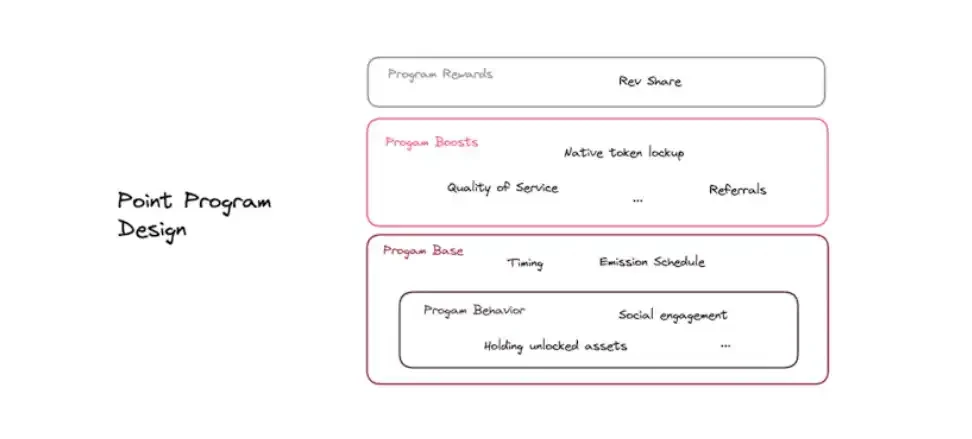
In Web3, loyalty programs have developed multiple complex mechanisms, many of which are used in combination. The most effective programs include behavior, base, and uplift, with some beginning to experiment with plan rewards. Let's delve into each aspect.
Behavior Plans
Behavior plans detail user actions and actions to earn loyalty points, such as depositing on L2 or trading on a new AMM. These include:
Holding Unlocked Assets - Assets that users can freely access (such as LRTs, Pendle YTs, and collateral deposits of Ethena sUSDe on Morpho)
Holding Locked Assets - Assets that users need to wait for a period of time before they can withdraw (such as locked Ethena USDe, native re-collateralization on Eigenlayer, Karak, and Symbiotic)
Provide Liquidity - Similar to unlocked assets, but with the risk of passive selling of deposited assets (such as Thruster LP positions staked in Hyperlock)
Social Interaction - Likes, shares, comments, and follows
Base Plans
Base plans include the most important details of the loyalty program, such as the schedule for point distribution, timeline, and airdrop scale. In most cases, loyalty programs are divided into multiple seasons, each typically lasting 3-6 months, with each season having unique base terms.
- Distribution Schedule - How often and how many points holders receive
One-time Rewards
One-time point allocation for specific actions. Used for incentivizing behavior and marketing. For example, Blur offers a one-time reward for listing NFTs within 14 days, Lyra offers a one-time reward for participating in Twitter/X Space events, and Napier offers rewards for social interaction and referrals.
Fixed Supply Distribution
Fixed supply distribution - the total supply of points for the entire program (such as Hyperliquid) or for a phase/season (such as Morpho*) is fixed. While both reduce dilution for users, the uncertainty of fixed program supply is minimal, and fixed phase supply allows the team to schedule distributions more flexibly. Teams typically use fixed supply distribution as a basis to provide additional security for users.
Variable distribution - (such as Eigenlayer, all major LRTs, Ethena, etc.). The total supply is variable and is a function of TVL. Accumulated based on a certain point per dollar or ETH contributed daily, the dynamic dilution of variable distribution discourages early depositors. Although expected airdrop payments (in USD) attract new deposits, users hoping to eliminate dilution must increase their participation in sync with the growth of total deposits. Teams favor this distribution schedule because it eliminates the complexity of ensuring fair distribution of points to all participants. To reduce dilution for early users and increase urgency, teams release decreasing accumulation rate schedules (such as 25 points per day in July, 20 points per day in August, etc.).
- Time - Duration of point distribution
Explicit vs. Ambiguous - Most projects provide a fixed duration for the loyalty program/season (such as 6 months), but some projects offer a range (such as 3-6 months). Teams seeking additional flexibility may choose an ambiguous timeline, although this may hinder growth.
Conditional - Some programs/seasons are designed to end early upon reaching key milestones. If the expected season airdrop allocation is fixed, this increases the urgency of participation. For example, Ethena had a milestone of $1 billion TVL in the first season—this goal was exceeded within seven weeks.
*Although Morpho distributes non-transferable $MOPRHO tokens as incentives, its operation is similar to that of loyalty point issuers.
Uplift Plans
Uplift plans are the primary levers adjusted by teams to reward users with a higher relative share of points through specific, targeted behaviors. Here is a list of different uplift mechanisms:
Quality of Service Uplift - Projects can improve the quality of one user group (e.g., liquidity providers) to enhance the product quality for another user group (e.g., traders). For systems where users can differentiate based on "service," such as Univ3 pools, projects can allocate points based on user contributions to the product user experience (e.g., liquidity). Examples include Blur, which rewards LPs by offering quotes closer to the floor price of NFTs, and Merkl, whose incentive mechanism favors competitive quotes and earning more trading fees for Univ3 LPs.
Referral - Referring others and earning a portion of their points (e.g., 10%). This helps with marketing and incentivizing whale/high-volume users. There is a risk of self-referral. Some projects require referral codes to access the application, generating additional marketing buzz, although the conversion rate may decrease. Examples include Ethena and Blackbird.
Tiered Referral Uplift - An extension of a simple referral system. Users can earn not only their referrer's share of points (i.e., level 1) but also their referrer's referrer's share of points (i.e., level 2). The aim is to encourage users to refer those expected to actively refer others. There is a risk of self-referral. Examples include Blur and Blast.
Base Uplift - Projects can add an amplification uplift to attract and cultivate mass users. The basic idea is that your base point accumulation rate increases with increased base usage, allowing users to earn rewards faster at the same usage level. Non-mass users will be undervalued and difficult to attract. For example, Aevo has a base trading volume uplift for traders.
Market Launch Uplift - Projects will use launch uplifts to attract liquidity and launch new markets before network effects take effect. Launch uplifts typically have an expiration date but can also explore other thresholds. For example, some LRT projects (such as EtherFi) use a 2x launch uplift for two weeks with each new Pendle market launch.
Loyalty Uplift - Providing additional points to users who pledge loyalty to a product (i.e., demonstrating use of product A instead of B). This is particularly effective for products that rely on network effects; as the network of competitors contracts, the relative value proposition of the product is further enhanced. Blur quickly attracted market share from OpenSea after its launch using this uplift. This uplift is more effective for NFTs due to their scarcity, especially when an owner typically only has one unit, forcing them to choose loyalty; however, for fungible tokens, users can spread their balance across multiple addresses to avoid unnecessary pressure.
Random Reward Uplift - Drawing inspiration from Skinner box experiments, some projects attract more participation and attention by rewarding uncertainty in the size or timing of rewards. Blur's gift pack reward system uses loyalty scores to determine the rarity*luck of the distribution of gift packs. While users do not know the absolute size of the reward, they know the relative quantity between each gift pack. Similarly, Aevo uses a "lucky" trading volume uplift system, where any trade by a user has the potential to receive a trading volume uplift, increasing the reward for that trade; both projects use tiered uplift systems, with the highest uplift frequency being the lowest (e.g., 1% chance of a 25x uplift).
Leaderboard Uplift - To encourage competition among users, projects establish leadership uplifts for the top 100 point earners. This concentrates point ownership among top users, but may lead to higher absolute KPIs as users compete for higher rankings. Although not heavily publicized, Blur used this uplift in the third season.
Native Token Lockup Uplift - Projects with existing native tokens offer uplifts to loyalty point earners who demonstrate long-term belief. Because this may reduce circulating supply, teams should anticipate increased volatility of their tokens. Examples include Ethena's $ENA and Safe's $SAFE.
TVL Uplift - Projects can incentivize promotion and marketing through point uplifts based on TVL growth. Examples include 3Jane, whose AMPL-style loyalty program re-baselines point ownership according to TVL, and Overload, which promises increased airdrop allocation upon reaching certain TVL milestones.
Group Uplift - Incentivizing social pressure and coordination to achieve collective uplift. AnimeChain is the first project to attempt this approach, using Squads as a shared uplift group.
Lockup Uplift - In addition to rewarding past stickiness with decayed program base schedules, some projects are beginning to experiment with rewarding future stickiness through uplifts. Examples include EtherFi's StakeRank 1-2x uplift in the second season and Hourglass's 1-4x uplift for liquidity lockups of different durations.
Reward Plans
Finally, reward plans are immediate benefits other than expected airdrops. Speculation about future airdrops has driven most of the demand for points, but some projects are trying to provide additional utility for point holders, such as Rainbow Wallet's ETH dividends for point holders.
While this component is currently small, I believe more teams will attempt point holder rewards, drawing inspiration from Web2 mechanisms, such as product fee discounts, event access, and other benefits.
Integrating All Elements
The diversity of these building blocks makes loyalty program design creative. Once a team has identified its goals (user acquisition, product improvement, marketing, etc.), it can combine multiple building blocks in sequence or in parallel to achieve maximum effectiveness. Here are some examples of creative use cases that go beyond traditional "deposit here" loyalty strategies to enhance Total Value Locked (TVL):
Ethena's strategy is to distribute points to USDe holders and increase returns for sUSDe holders.
Napier's strategy is to incentivize social interaction and asset holders from other projects to increase partnerships and expand marketing coverage.
Blur's market entry strategy leverages various point mechanisms in multiple airdrops to quickly establish supply and demand in the NFT market and rapidly gain market share upon public release. By using random uplift gift packs, their high-level strategy is as follows:
User Acquisition - Airdrop 0 rewards private beta testers to attract the most active NFT traders.
Launch Supply - Airdrop 1 rewards new listings by existing NFT traders.
Building Supply from loyal users - Airdrop 2, larger in scale than Airdrop 1, rewards more listings and provides uplift to loyal listers transferring liquidity from other NFT markets.
Stimulating Demand - Airdrop 3 rewards competitive bidding to incentivize trading volume.
After the project designs its loyalty program and market entry strategy, it will focus on plan implementation. Point accumulation calculations, data pipelines, price feeds, and point data storage are all part of the loyalty program backend. Once the backend is completed, the project will focus on consumer-facing implementation, usually a public dashboard displaying user point balances and point leaderboards. Many projects build their implementation from scratch, but some outsource the work to developer shops and other infrastructure providers.
Next, when the project is ready for its Token Generation Event (TGE) and initial airdrop, they will explore methods to distribute tokens to their point holders. While airdrop mechanisms are not included in this post, teams should consider airdropping tokens in the form of options, fixed vs. dynamic allocation, linear vs. non-linear distribution, ownership, lockups, Sybil resistance, and distribution implementation. Those interested in learning more can refer to this post for a quick grasp of the subject matter.
Criticism and Shortcomings of Loyalty Programs
Although loyalty programs have proven effective, they are not without criticism. Loyalty programs are entirely centralized incentive mechanisms. Point accumulation calculations, data storage, program schedules, and standards are often opaque to users and typically stored in off-chain databases. Therefore, issuers of points must prioritize transparency as much as possible to build user trust. If users cannot trust the terms of the loyalty program, they will not value the points and will chase rewards hastily.
While teams before TGE for legal reasons usually cannot disclose upcoming airdrops or allocations for point holders, they can invest in clear communication, timely disclosure of plan adjustments, and quick fixes in case of errors; EtherFi set a good example in handling calculation errors.
Other public criticisms, such as stingy point holder allocations and airdrop distributions vulnerable to Sybil attacks, actually unfairly blame loyalty programs, when in fact these are flaws in the airdrop plan. Points are just a precise way of incentivizing and recording users' "point shares." Airdrop terms determine how, when, and what kind of rewards point holders receive.
As seen in Eigenlayer, users are not dissatisfied with their point balances. They are dissatisfied with the quantity of their point conversion for airdrops and the undisclosed claiming criteria. After 11 months of deposits, point holders received only 5% of the TGE, feeling "farmed" and earning returns well below the market average at the time. Additionally, many point holders were unexpectedly geoblocked, unable to claim their $EIGEN shares. While teams have complete discretion over token distribution, they can easily avoid the latter issue by geoblocking the product in advance. The same goes for Blast—users are not dissatisfied with their point balances. Blast airdropped 7% to point holders and required the first 1000 wallets to partially lock up for 6 months. For a plan of less than 6 months, this is quite consistent with other airdrop seasons (such as Ethena, EtherFi, etc.).
In summary, while the effectiveness of loyalty programs has been proven in the initial stages, teams should pay attention to transparency issues, loyalty program fatigue, and the masking of product-market fit. Through timely communication, reasonable incentive mechanisms, and ensuring organic user participation, teams can maximize the effectiveness of loyalty programs while avoiding potential negative impacts.
Future Outlook
Looking ahead, I expect loyalty programs to evolve to address the most pressing issues, such as transparency and loyalty program fatigue.
To increase total point supply, distribution logic, and transparency of accumulated history, future loyalty programs or parts of them will exist on-chain. Examples of on-chain point implementations include 3Jane's AMPLOL and Frax's FXLT points. Another point software provider is Stack, building infrastructure to manage on-chain loyalty programs.
Addressing loyalty program fatigue is a more complex challenge. While discussions on how to differentiate program designs are frequent in private chats and social media, the key to reducing fatigue may lie in enabling users to assess the value of points quickly and confidently. This ability will significantly simplify comparisons between various point opportunities, making participation decisions more direct and less overwhelming. While not part of loyalty program design, secondary markets (such as Whales Market) can help users price points and reduce fatigue, although their liquidity is insufficient to support most point exit strategies. However, as these markets mature, they may become indispensable in price discovery, providing exit strategies, and creating a more dynamic point economy.
Overall, future loyalty programs will focus on higher transparency and user-friendliness, addressing the current major challenges through on-chain implementation and the development of secondary markets.
Conclusion
Points have become a powerful tool in the Web3 ecosystem, bringing benefits beyond traditional loyalty programs. They enable projects to reward core loyal users, kickstart network effects, and fine-tune their market entry strategies in a more predictable manner. This leads to more effective product development and ultimately creates value for end users.
As this field matures, I expect the design and implementation of loyalty programs to further innovate. The key to success lies in balancing transparency and flexibility, and closely integrating loyalty programs with overall project goals and user needs.
For builders and projects in the Web3 space, understanding and harnessing the power of well-designed loyalty programs may be a key factor in achieving sustainable growth. As we move forward, points may continue to be a fundamental component of cryptographic incentive structures, shaping the landscape of DeFi and other fields.
免责声明:本文章仅代表作者个人观点,不代表本平台的立场和观点。本文章仅供信息分享,不构成对任何人的任何投资建议。用户与作者之间的任何争议,与本平台无关。如网页中刊载的文章或图片涉及侵权,请提供相关的权利证明和身份证明发送邮件到support@aicoin.com,本平台相关工作人员将会进行核查。
